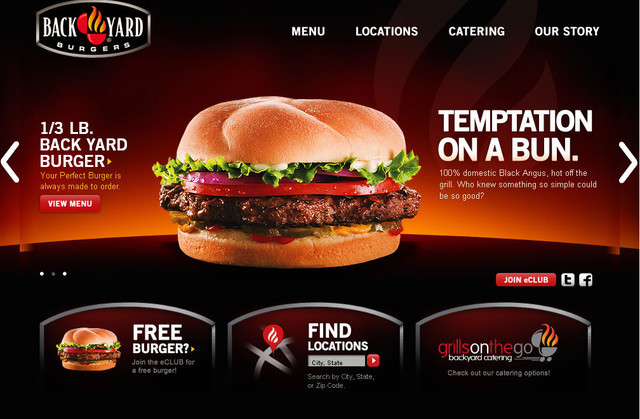
Website Sliders (a.k.a. carousels)
Website sliders are a web design term used for a slideshow added to a web page. There are considered a staple for many web designers and businesses to create graphic presence and make a bigger statement about their brand.
Many website plugins are now available that make it easier than ever to create sliders and carousels on a website.
But is bigger better? Here are 12 facts and studies that show why website sliders suck.
- Only 1% of people actually click on a website slider. Many confuse them for ads.
- Of that 1% of people who click, 89% click on the banner in the first position.
- Only 22% of Call-To-Action (CTA) clicks are on graphics; 78% are on text and headlines according to a study by KissMetrics. By using a slider or carousel, you’re lowering CTA clicks and conversions.
- 23% increase in sales for the website without a carousel in an A/B test that compared the same websites with and without a carousel.
- 47% of people expect a website to load in two seconds or less and sliders and carousels slow down the site.
- 53% of mobile users abandon mobile websites that take over three seconds to load and website sliders often don’t work well on mobile sites.
- Between 0.4 seconds and 5 seconds is the amount of extra time that a slider or carousel can add to your webpage studies have shown.
- 0.65% is the Click Through Rate (CTR) or 32 clicks out of 5,000 visits from a survey by Search Engine Land of B2B sites.
- No matter how much you brand your slider, if they look like ads (and they almost always do), there’s a high possibility they will be ignored. Eye tracking studies conducted by Neilson Norman Group found as soon as visitors perceived something to be an advertisement they turned their focus away from it.
- You take control out of your user’s hands and give it to the slider.
Image sliders keep rotating, which is not only frustrating, but is terrible for usability according to the folks at UX Movement. - Website sliders push key content down. Google has stated, since 2012, that pushing down content is harmful for SEO. When users search for something and click on a website, they are frustrated when the content is not readily available. Having to scroll past a slider lowers UX and Google may penalize.
- Website sliders are vulnerable to hackers. The most common ways that hacker enters websites are through website theme and plug-ins. Since sliders are carousel are often made available as plug-ins, hackers have easier access to a website.
If you’re thinking of using a website slider on your website, you might want to rethink it. Do these facts convince you? Does your business need to create a website that get results?

